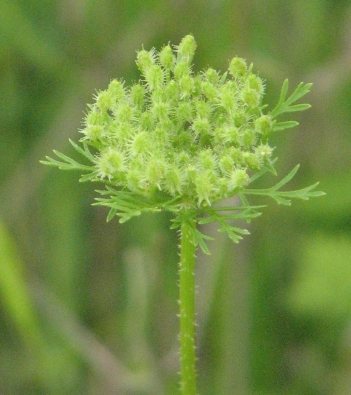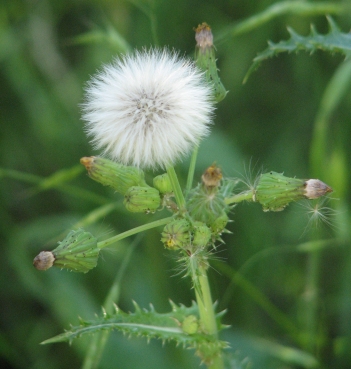Bush Pepper; Capsicum frutescens. The genus Capsicum has been divided into four species, each with multiple varieties. The best known species is C annum, which includes Bell Peppers and Jalapenio, is the most mild, ranging from 0-10,000 in terms of hotness. Capsicum frutescens is a small, hot pepper hardy to North Texas, and one of the few pepper plants which is indigenous to the southern USA. A medium height (less than 2’), pithy stemmed member of the tomato family that branches regularly in a rigid angular pattern from each node, with lance shaped leaves, somewhat clammy to the touch, so broad they are almost heart shaped. Tiny white, forward pointing flowers, blooming in late summer, are born singly on stems that point upward, looking somewhat like White Nightshade flowers, except that they do not nod, and lack the prominent, yellow, fused anthers. The fruit are tiny (3/8”) peppers which turn yellow, then red-orange when ripe. It has been rated at 30,000-70,000 in terms of Scoville hotness, (2,500,000 is the max). Forested areas, or forest margins on SWk. (907-908 Vines) 8/28/18; 19 not recrd;

Bush Pepper habit; a medium height, regionally perennial pepper with broadly lanceolate leaves on long, alternating stems, bearing solitary, white flowers that convert to small, oval peppers that are mildly hot
Note; leaves are mildly clammy, the smooth stems zig-zag, and the leaves are held in an alternating pattern within a single plain

Note; the small, white flowers are born singly from leaf axils, the peduncles pointing up, the five petals only slightly nodding.
Note; the 5 stamen are fused to the pistol, not held on free stamen

Note; oval, cherry like peppers are held aloft on short, upright stems























